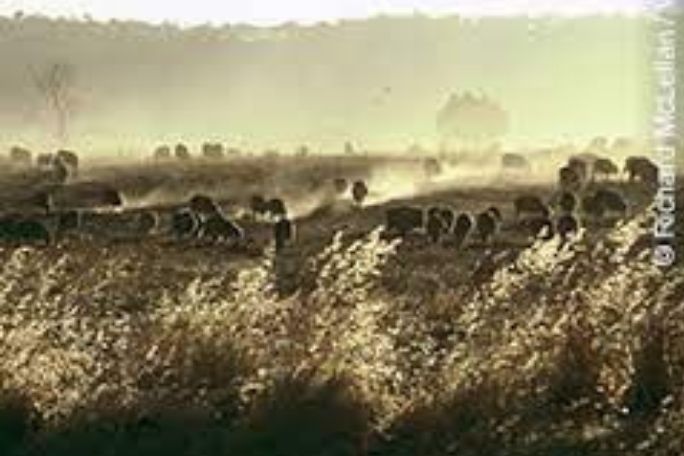Lesson summary
Students will create a diagram similar to the familiar ‘water cycle’ diagrams used in geographical studies. The diagram will illustrate the drought to flood to drought pattern that is exacerbated by climate change. This lesson meets selected Australian Curriculum outcomes for Years 5 and 6 in the subjects of Science and Geography.
Learning intentions:
Students will...
- become familiar with the drought and flood cycle facing many Australian food growers
- use their pre-existing knowledge and skills to diagrammatically represent a climatic cycle
- use their oral skills to present their own ideas to their peers.
Lesson guides and printables
Lesson details
Curriculum mapping
Australian Curriculum content descriptions:
Year 5 HASS (Geography):
- The environmental and human influences on the location and characteristics of a place and the management of spaces within them (ACHASSK113)
- The influence of people, including Aboriginal and Torres Strait Islander Peoples, on the environmental characteristics of Australian places (ACHASSK112) (Extension activity)
- Organise and represent data in a range of formats including tables, graphs and large- and small-scale maps, using discipline-appropriate conventions (ACHASSI096)
- Evaluate evidence to draw conclusions (ACHASSI101)
- Present ideas, findings, viewpoints and conclusions in a range of texts and modes that incorporate source materials, digital and non-digital representations and discipline-specific terms and conventions (ACHASSI105)
Year 5 Science:
- Communicate ideas, explanations and processes in a variety of ways, including multi-modal texts (ACSIS093)
Year 6 HASS (Geography):
- Organise and represent data in a range of formats including tables, graphs and large- and small-scale maps, using discipline- appropriate conventions (ACHASSI096)
- Evaluate evidence to draw conclusions (ACHASSI101)
- Present ideas, findings, viewpoints and conclusions in a range of texts and modes that incorporate source materials, digital and non-digital representations and discipline-specific terms and conventions (ACHASSI133)
Year 6 Science:
- The growth and survival of living things are affected by the physical conditions of their environment (ACSSU094)
- Sudden geological changes or extreme weather conditions can affect Earth’s surface (ACSSU096)
- Communicate ideas, explanations and processes in a variety of ways, including multi-modal texts (ACSIS110)
General capabilities: Literacy, Critical and creative thinking,
Cross curriculum priority: Sustainability OI.1, OI.2.
Syllabus Outcomes: GE3-2, GE3-3, GE3-4, ST3-4WS, ST3-11LW, ST3-9ES.
Time needed: 60 minutes.
Resources required
- Copies of the Student Worksheet, The Drought and Flood Cycle
- A3 paper will be needed, one sheet per student
- Students should come equipped with coloured pens, pencils, textas, scissors and glue to use
Additional info
This lesson has been created in partnership with WWF-Australia. Earth Hour is the world’s largest community-driven climate change campaign. At the centre of Earth Hour is switching off lights to show a commitment to taking action. Thousands of teachers use Earth Hour’s education program to enrich their curriculum and provide pathways for young people to create change in their world.
For the most up to date Earth Hour dates, times, and events, check here.


Welcome back!
Don't have an account yet?
Log in with:
By signing up to Cool.org you consent and agree to Cool's privacy policy to
store, manage and process your personal information. To read more, please see
our privacy policy here(Opens in new tab).
Create your free Cool.org account.
Many of our resources are free, with an option to upgrade to Cool+ for premium content.
Already have an account?
Sign up with:
By signing up to Cool.org you consent and agree to Cool's privacy policy to
store, manage and process your personal information. To read more, please see
our privacy policy here(Opens in new tab).